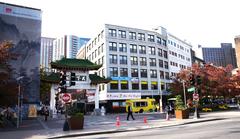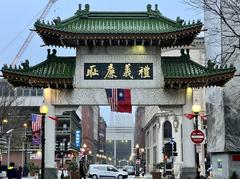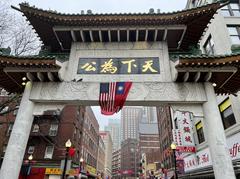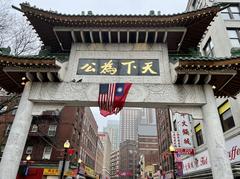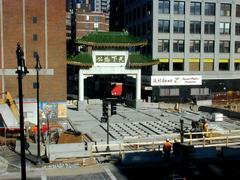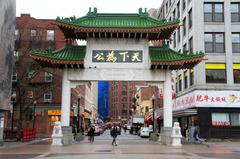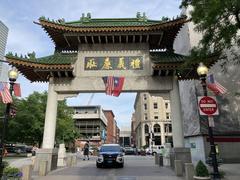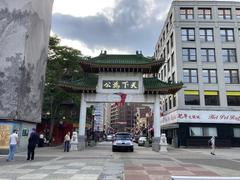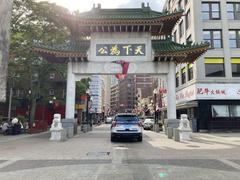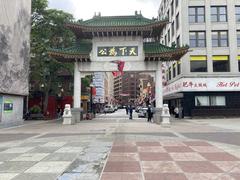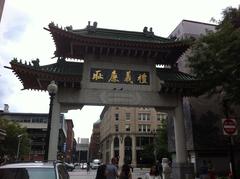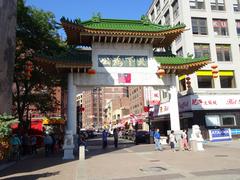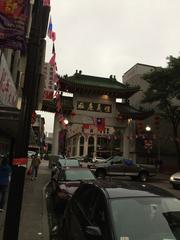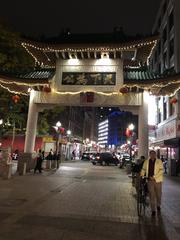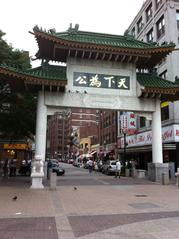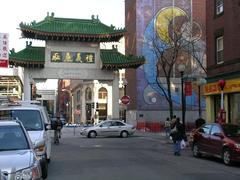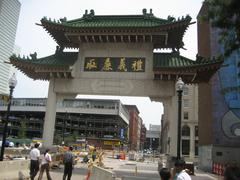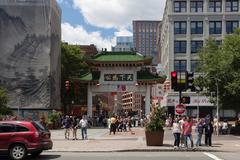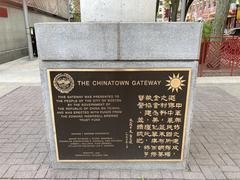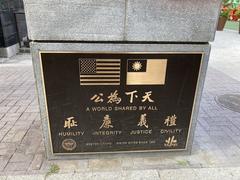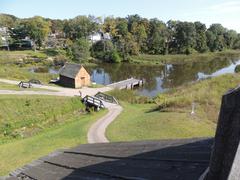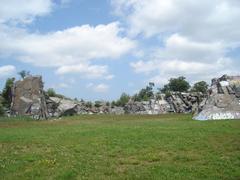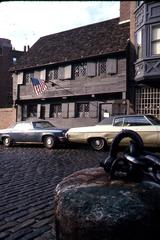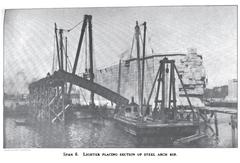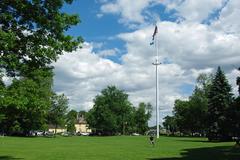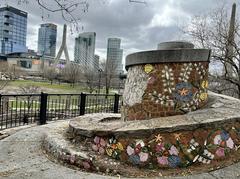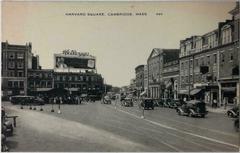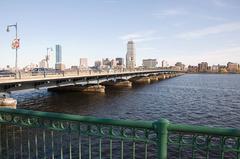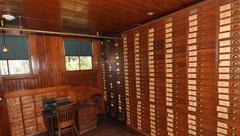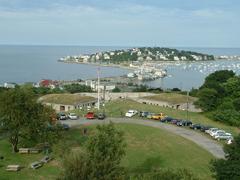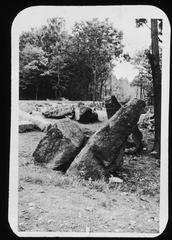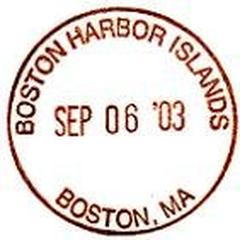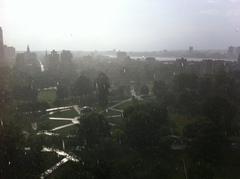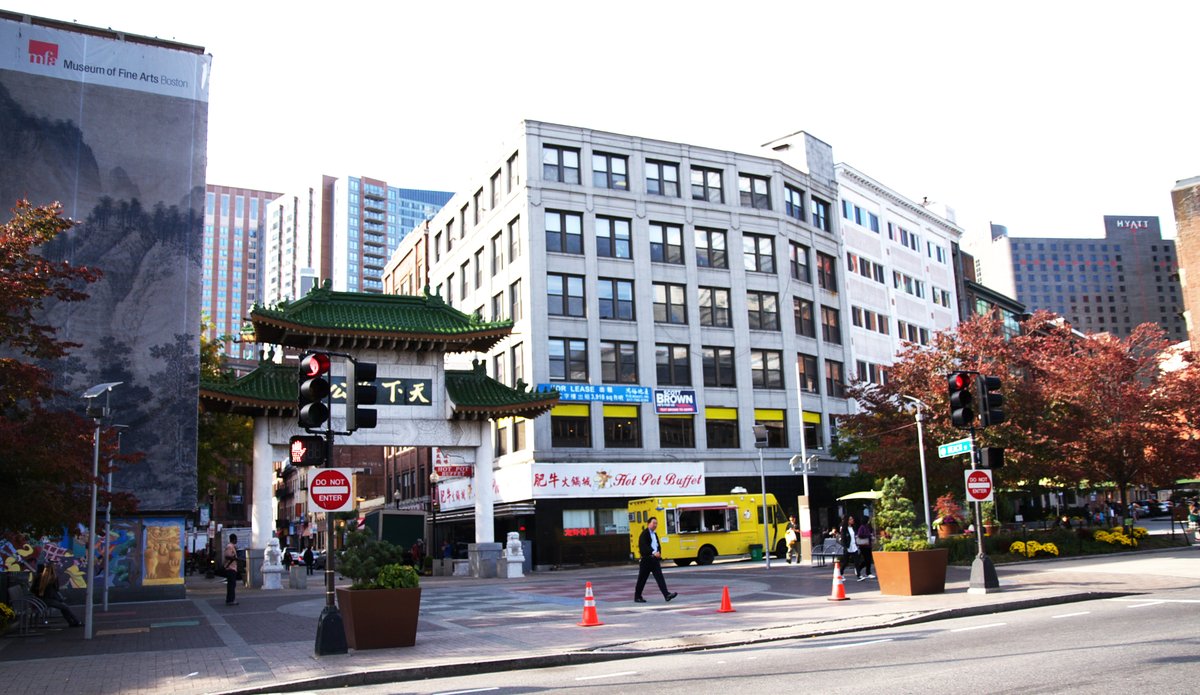
Visiting Hours, Tickets, and Historical Insights: Chinatown Gate, Boston
Date: 19/07/2024
Introduction
Boston’s Chinatown Gate, also known as the ‘Paifang,’ stands as an iconic and culturally significant landmark within the vibrant Chinatown neighborhood. Erected in 1982 as a symbol of the strong ties between Boston and Taipei, the gate serves as a testament to the rich heritage and contributions of the Chinese-American community in the area (Boston.gov). This guide aims to provide a comprehensive overview of the Chinatown Gate, covering its historical background, architectural beauty, cultural symbolism, and practical visitor information. Whether you’re a first-time visitor or a frequent traveler, this guide will help you explore the many attractions and dining options that surround this remarkable monument.
Table of Contents
- Introduction
- Historical Background
- Community and Cultural Events
- Visiting Hours and Tickets
- Travel Tips and Nearby Attractions
- Social and Economic Impact
- Preservation and Challenges
- Educational and Cultural Programs
- Frequently Asked Questions (FAQ)
- Conclusion
Historical Background
Architectural Significance
The Chinatown Gate is an exemplary piece of traditional Chinese architecture, featuring intricate designs and symbolic elements. The structure is adorned with two guardian lions, known as ‘Shi,’ which are believed to ward off evil spirits. The gate itself is constructed using traditional materials such as wood and stone, and it is painted in vibrant colors, including red and gold, which are considered auspicious in Chinese culture (Smithsonian Magazine).
Symbolism and Cultural Elements
The inscriptions on the gate are of particular cultural significance. The Chinese characters on the gate translate to “All under heaven is for the good of the people,” a phrase that encapsulates the community’s values of unity and prosperity. Additionally, the gate features traditional Chinese motifs such as dragons and phoenixes, which symbolize power, strength, and renewal (Chinatown Main Street).
Community and Cultural Events
The Chinatown Gate serves as a focal point for numerous cultural events and celebrations throughout the year. One of the most significant events is the annual Chinese New Year parade, which attracts thousands of visitors and features lion dances, dragon dances, and various performances that highlight Chinese traditions. The gate is also a popular spot for the Mid-Autumn Festival, where the community gathers to celebrate with mooncakes, lanterns, and cultural performances (Boston Chinatown Neighborhood Center).
Visiting Hours and Tickets
The Chinatown Gate is open to visitors year-round, with no entry fee. However, special events may have specific timings and ticket requirements. Be sure to check ahead for any special events that might require tickets or have restricted visiting hours.
Travel Tips and Nearby Attractions
Location and Accessibility
The Chinatown Gate is located at the intersection of Beach Street and Surface Road in Boston’s Chinatown neighborhood. This iconic landmark is easily accessible by public transportation. The nearest MBTA station is the Chinatown Station on the Orange Line, which is just a short walk away. Additionally, the South Station, a major transportation hub, is also within walking distance, providing access to the Red Line, Silver Line, and various commuter rail services.
Nearby Attractions
- Boston Common: Located about a 10-minute walk from Chinatown, it is the oldest public park in the United States and offers walking paths, a frog pond, and various monuments (Boston Common).
- The Freedom Trail: A 2.5-mile-long path that takes visitors through 16 historically significant sites in Boston, including landmarks such as the Massachusetts State House and Paul Revere’s House (Freedom Trail).
- Boston Public Library: Established in 1848, it was the first large free municipal library in the United States and features stunning murals, a grand reading room, and a tranquil courtyard (Boston Public Library).
- New England Aquarium: Located on the Central Wharf, it houses thousands of aquatic animals and offers interactive exhibits and educational programs (New England Aquarium).
- Boston Children’s Museum: Located along the Fort Point Channel, it offers various interactive exhibits designed to engage and educate young minds (Boston Children’s Museum).
Social and Economic Impact
The Chinatown Gate has played a crucial role in the social and economic development of Boston’s Chinatown. It has become a symbol of pride for the Chinese-American community and a popular tourist attraction, drawing visitors from around the world. The influx of tourists has boosted local businesses, including restaurants, shops, and cultural centers, contributing to the economic vitality of the neighborhood (Boston Planning & Development Agency).
Preservation and Challenges
Despite its significance, the Chinatown Gate and the surrounding area face challenges related to urban development and gentrification. Efforts are ongoing to preserve the cultural and historical integrity of the gate and the Chinatown neighborhood. Community organizations and local government agencies are working together to ensure that the gate remains a symbol of cultural heritage and a vibrant part of Boston’s urban landscape (Historic Boston Inc.).
Educational and Cultural Programs
The Chinatown Gate is not only a historical landmark but also an educational resource. Various programs and tours are organized to educate visitors about the history and cultural significance of the gate and the Chinatown neighborhood. These programs aim to foster a deeper understanding and appreciation of Chinese culture and history among both locals and tourists (Boston University).
Frequently Asked Questions (FAQ)
What are the visiting hours for Chinatown Gate? The Chinatown Gate is open to visitors year-round, with no specific visiting hours. Special events may have specific timings, so it’s best to check in advance.
Is there an entry fee for Chinatown Gate? No, there is no entry fee to visit the Chinatown Gate. However, some special events might require tickets.
What are some nearby attractions? Nearby attractions include the Boston Common, the Boston Public Garden, and various authentic Chinese restaurants and shops.
Conclusion
The Chinatown Gate in Boston stands as a testament to the rich cultural heritage and history of the Chinese-American community. Its architectural beauty, cultural symbolism, and role in community events make it a significant landmark. As efforts continue to preserve and celebrate this cultural icon, the Chinatown Gate will undoubtedly remain a cherished part of Boston’s diverse cultural landscape.
References
- Boston.gov. (n.d.). Exploring the Chinatown Gate in Boston - History, Visiting Hours, and More
- Smithsonian Magazine. (n.d.). Exploring the Chinatown Gate in Boston - History, Visiting Hours, and More
- Chinatown Main Street. (n.d.). Exploring the Chinatown Gate in Boston - History, Visiting Hours, and More
- Boston Chinatown Neighborhood Center. (n.d.). Exploring the Chinatown Gate in Boston - History, Visiting Hours, and More
- Boston Planning & Development Agency. (n.d.). Exploring the Chinatown Gate in Boston - History, Visiting Hours, and More
- Historic Boston Inc. (n.d.). Exploring the Chinatown Gate in Boston - History, Visiting Hours, and More
- Boston University. (n.d.). Exploring the Chinatown Gate in Boston - History, Visiting Hours, and More
- Yelp. (n.d.). Gourmet Dumpling House
- Shojo. (n.d.). Shojo
- Yelp. (n.d.). Hei La Moon
- Yelp. (n.d.). Pho Pasteur
- Yelp. (n.d.). China Pearl
- Yelp. (n.d.). Peach Farm
